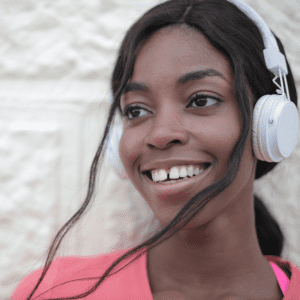Behavioral Therapy Techniques for ADHD in Children and Adults
Rewiring the brain to help it maintain focus
Attention-Deficit/Hyperactivity Disorder (ADHD) can impact people’s lives in many ways, from difficulties at school or work, to strained relationships, and even mental and physical health challenges. ADHD has many symptoms and associated behaviors, and their impact on individuals varies from person to person, but commonly they manifest in forgetfulness, impulsive behavior, and trouble sitting still or focusing on a single task.
Following a diagnosis, most people turn to treatment programs that have been shown to be effective like behavioral therapy, medications, or both. Where behavioral therapies typically seek to help people monitor and manage symptoms of ADHD, medications affect chemicals in the brain that impact how the individual copes with these symptoms.

But because ADHD stems from the brain’s inability to effectively organize and process information, we can also consider neuroplasticity in the brain when planning a treatment program. This allows us to use various methods to rewire the brain and train it to naturally produce its own hormones.
Treating ADHD by Training the Brain
Neuroplasticity is the ability of the brain to adapt and change. We can use this ability to rewire the brain and treat specific conditions, like ADHD. These treatment programs provide stimulation from multisensory inputs and movement in order to activate neural pathways used in processing of sensory information. Neuronal connections in these pathways are strengthened and new connections are established through repeated sessions.
More specifically, we can improve the brain’s ability to organize information by applying listening therapy, which consists of specially treated music. In listening therapy, music is delivered through bone conduction and combined with movement to improve whole body organization, leading to a more effective foundation for attention and concentration. With appropriate frequency, duration and intensity, the positive changes created through listening therapy are permanent.
Applying Listening Therapy to Enhance ADHD Treatments
Listening therapy is a bottom-up, non-invasive and drug-free solution for individuals experiencing ADHD. This approach includes music, movement, breathing, meditation and language exercises to enable meaningful and lasting changes in physiological state and the individual’s ability to focus.
Below are two programs for ADHD offered by Unyte-iLs, in partnership with healthcare professionals, families and individuals, that can be administered in-clinic, at home, or remotely.

THE FOCUS SYSTEM
The Focus System is a clinical-level intervention consisting of therapeutically-treated music combined with movement activities and cognitive challenges to activate brain networks, and is designed for use at home, in clinic or in school. This program provides simultaneous multisensory input to help develop new and strengthen existing neural pathways governing organization of the body and brain function. This system applies specific frequency ranges to target the areas in which people with ADHD struggle, like sustained attention and focus, processing speed, working memory, mental energy, executive function skills, and more.

THE SAFE AND SOUND PROTOCOL (SSP)
People dealing with ADHD can experience emotional and behavioral dysregulation, which can be a result of the central nervous system’s fight or flight response being triggered by external stresses and challenges. The Safe and Sound Protocol (SSP) is a listening therapy that helps to shift the nervous system into a parasympathetic state, or a state of feeling safe and calm, and is commonly used by mental health professionals as an adjunct therapy to help their patients regulate, and process external cues and signals more effectively. Once in this state, a patient’s brain and nervous system becomes primed for responding to other treatments, including the Focus System and behavioral therapies.
Unyte-iLs Program Administration
These programs are designed to be administered by qualified mental health professionals as part of existing treatments, and not to be used directly as a self-treatment. If you are seeking to use these programs at home for yourself or your family, please contact us to learn more.




 © 2025 Unyte Health US Inc.
© 2025 Unyte Health US Inc.